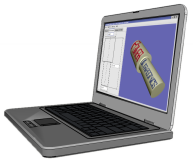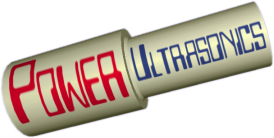A new online ultrasonics components store has just opened at www.UltrasonicsWorld.com. Check their amazing prices for replacement ultrasonics components, fully compatible with the major manufacturers' originals at a fraction of the cost.
You are here
sonochemical pollutant abatement
[size=12]Hello all, I am a Biochemist (from Chile, South America) .
Recently, I started reading about ultrasonic applications for pollutant abatement,
and I am most intereseted in this technology.
As I am starting to learn, I have some doubts, the main one is the following :
I have no idea how the "Power Input" can be calculated, it always says :“by
calorimetric measurement” and I see the reference: Mason Practical
Sonochemistry 1991 Users guide to applications in chemistry and chemical
engineering . Regretably, I have no chance of buying or borrowing this book,
it is not available here in Chile, could you please help?
If any of you has worked in the field ,could you give some advice?
or perhaps if you have the book. Could you possibly
scan those pages and send them to me??
I would be most grateful for any help you could provide..[/size]


Re: sonochemical pollutant abatement
Hi Isabel,
I'm not a specialist in sonochemistry (or any other kind of chemistry) but isn't calorimetric measurement used quite commonly for measuring the heat generated by a chemical reaction? Essentially just an insulated container and a thermometer measuring the temperature change.
Presumably by comparing the expected heat gain / loss in a reaction without ultrasonics to the actual measurement you would know how much energy was supplied by the ultrasonics. Alternatively, provided the density and viscosity of the reagents don't change too much you could perhaps sonicate them separately to see how much energy is supplied in the absence of any chemical reaction.
On a more practical level, most ultrasonic equipment does come with a power indicator which should be good at least for an indication of the supplied power. For better accuracy you could calibrate it with calorimetric measurements on water or a non-reactive fluid of similar density and viscosity to your reagents.
Hope that helps. If you have any other questions please don't hesitate to ask.
Chris